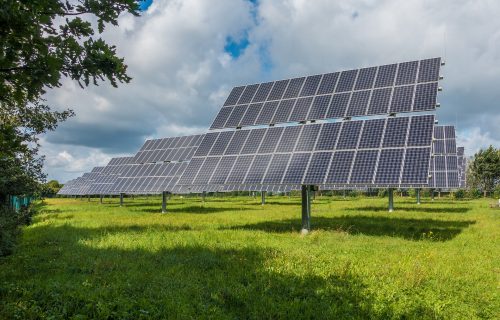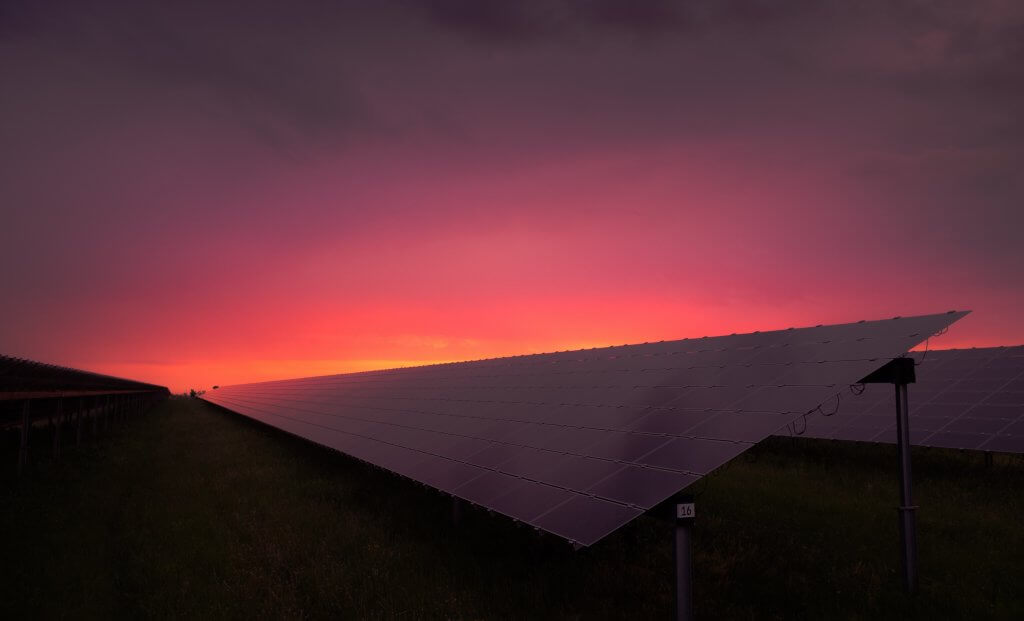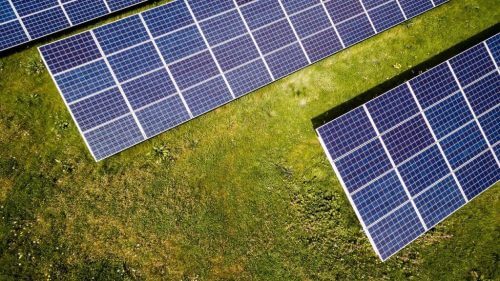Are we approaching a solar waste crisis?

By Dr. Daniel Mader, Zivata, Science and Environment News Agency
Solar energy is "green" energy, and we automatically associate it with protecting the environment and health, but this renewable energy also creates difficult environmental problems, such as huge volumes of electronic waste - solar panels, for example - which can be dangerous to the environment.
Renewable energies, such as solar energy, wind, water, waves and geothermal energy, are the only technologies applicable today that are able to provide energy without fear of fully exploiting the energy resources (at least as long as the sun and the earth exist). Every country can produce energy from at least some of these sources and thus free itself from the complete dependence on fuel imports, as indeed happens today in most countries of the world.
Renewable energy production systems (solar panels, wind turbines) are often small compared to large power plants, which leads to decentralization in the energy production system. This decentralization prevents reliance on a limited number of power plants. Thus, if a major malfunction (natural disaster, technical malfunction, war event, cyber attack, etc.) hits one or two stations, the electricity network in large areas of the country will not necessarily collapse.
If you combine renewable energy production systems with energy storage technologies and a smart electricity grid, you can establish reliable and inexpensive electricity grids while reducing the emission of pollutants into the environment, dramatically reducing greenhouse gas emissions and creating a chance to curb climate change.
However, a dramatic increase in the number of energy production facilities inevitably also leads to an increase in the amount of waste from such facilities, when they will end their lives and become waste. In this case, does the benefit of renewable energy decrease significantly?
800 thousand tons of garbage per year
The most relevant renewable energy for Israel is undoubtedly solar energy and the best way to harness it is solar panels. The lifespan of solar panels used today is about 30-20 years. This is because over time, the output of the panels decreases. After 30-20 years the output drops to 80 percent of the output at installation.
Based on the rate of installation of solar panels and their expected lifespan, The Japanese Ministry of Environmental Protection published a forecast for the expected amount of waste from solar panels in the coming decades. This amount is expected to reach 10,000 tons in 2020, and 800,000 tons in 2040. For illustration, in2015 About 44 million tons of municipal waste were produced in Japan. Thus, and assuming that the amount of Japanese waste will not change significantly, this is about 2 percent of the total amount of waste in the country.

This is not normal waste. Solar panels contain heavy metals (such as the carcinogenic and toxic cadmium) and other harmful substances (such as the powerful greenhouse gas sulfur hexafluoride) that may leak into the environment and pollute it. Therefore, many western countries export their e-waste to e-waste sites throughout the third world. In such sites, the locals tend to burn the waste without adequate protective measures or gas purification, in order to get rid of the plastic and gain access to the valuable metals that are incorporated into the electronic waste. This "treatment" of waste exposes the locals to serious pollution.
According to data from the Japanese Ministry of Environmental Protection, Toshiba's solar panel recycling plant in Japan is able to handle 44 tons of solar waste per month. At this rate, it is expected to take the plant 19 years to recycle the 10,000 tons of solar panels expected to retire in Japan in 2020 alone. Therefore, without fast, successful, environmental and cheaper treatment solutions - we are definitely in trouble.
Extend the life of the panel
In Israel Approximately 5.4 million tons of municipal and commercial waste are produced annually. A similar amount of solar panel waste to the Japanese forecast for 2040 corresponds to about 100 thousand tons in Israel. There is no doubt that this is a rather serious amount of waste, but it is significantly less than the annual solid waste amount of coal ash from the power plants (0.8-1.5 million tons per year in the current decade), and 20-10 times smaller than the greenhouse gas emissions of all fossil fuels, including natural gas.
There are systemic solutions to reduce the problem. It is possible, for example, to extend the life of solar panels through more successful engineering, compromising on an output of less than 80 percent for aging panels (solar panels that decrease in their output would be welcomed in developing countries), designing and manufacturing products so that they are easy and cheap to recycle. One way or another, if we do not address this problem, we are expected to drown in a wave of solar waste.

4 תגובות
And what is different from any other "new" waste? (of the new era?) Ink cartridges, printers, old computer parts, screens and even construction waste, white electricity that today is quickly replaced and not like in the past, left for 30 years (refrigerators, washing machines) of solar heaters and such? The patron will be clearly regulatory - it will be forbidden to paint products from materials that cannot be recycled at levels above 80% - and that's it. So the era of consumption will slow down a bit - nothing will happen to us..
There is another problem, perhaps even much more serious, and that is the huge areas that the panels occupy
In some cases, they take an area that is called a violated area, meaning an area that has been used by humans in the past and is currently not being used, even though it is an area that is used by wild animals either for sustenance or for transit. just solar panels,
The matter is of course an economic matter because it is the cheapest form, but
The initial place where it would be desirable to put them is in areas already occupied by humans
Above parking lots, buildings, houses and roads, places that are no longer part of nature, but this will of course make it more expensive and make it less profitable, so the sad result is that in order to improve air pollution and lower emissions, we are creating another problem of closing and blocking the last areas where there is still nature, because the price of The panel continues to drop
The business will become very profitable even without subsidies, there will be huge market pressures to put these panels in any available space
This is where the state should enter with a long-term view of where to place these panels,
When it is necessary to find which areas, for example in Israel, will cause the least damage to nature, assuming that it is deployed on open areas, and if it is by laws, for example, perhaps every large industrial building built on its free roof area should contain solar panels
In any case, a product must be designed with a complete life cycle in mind (not just solar panels)
All the components can be recycled including the silicon.. the problem is in waste recycling and not in the product